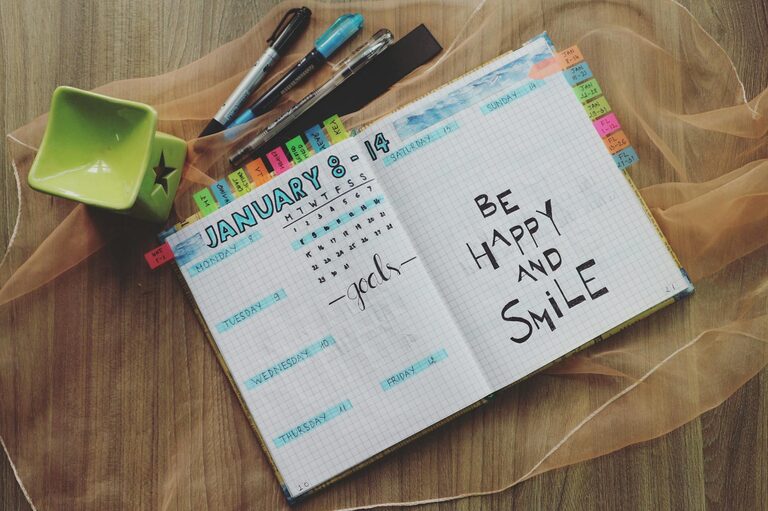Setting weekly goals is a powerful way to stay focused and make steady progress in both your personal and professional life. However, setting unrealistic goals can leave you feeling frustrated and discouraged. In this post, you’ll learn practical steps to set realistic weekly goals that boost your productivity and keep you motivated.
Why Set Weekly Goals?
Weekly goals act as manageable milestones that guide your efforts, breaking down larger tasks into smaller, achievable chunks. They help you:
– Maintain focus on priorities
– Track your progress regularly
– Adjust plans based on what’s working
– Build habits that lead to long-term success
Step 1: Reflect on Your Long-Term Objectives
Before setting weekly goals, it’s important to clarify your bigger picture. Ask yourself:
– What are my main priorities this month or quarter?
– What key outcomes do I want to achieve by the end of the year?
Understanding your long-term objectives ensures your weekly goals align with your broader vision.
Step 2: Review Last Week’s Performance
Take a few minutes to review what you accomplished last week. Consider:
– Which goals did I meet?
– What obstacles prevented me from completing other goals?
– How much time did I realistically spend on each task?
This review helps you learn from experience and set smarter goals going forward.
Step 3: Be Specific and Clear
Vague goals are hard to measure and easy to neglect. Instead of “exercise more,” try “walk for 30 minutes on Monday, Wednesday, and Friday.” Clear goals make it easier to track progress and stay committed.
How to Be Specific
– Use action verbs (write, organize, call, clean)
– Specify the quantity or duration (write 500 words, clean the kitchen for 20 minutes)
– Set deadlines within the week (by Tuesday, Thursday at noon)
Step 4: Prioritize Your Tasks
Every week has limited time and energy. Choose the most important goals that will have the greatest impact. Use techniques like the Eisenhower Matrix to decide:
– What’s urgent and important?
– What can wait or be delegated?
Focusing on priority goals prevents overwhelm and ensures you’re working smarter, not harder.
Step 5: Set a Realistic Number of Goals
It’s tempting to stack your list with many ambitions, but too many goals reduce focus and increase stress. Aim for 3 to 5 key goals each week—enough to make progress without burnout.
Step 6: Break Down Larger Goals into Smaller Tasks
If your goal is complex, divide it into manageable steps. For example, instead of “launch a website,” break it into:
– Choose a platform by Monday
– Design homepage on Tuesday and Wednesday
– Write content on Thursday
– Test and publish on Friday
This approach makes goals less intimidating and easier to complete.
Step 7: Plan Your Week with a Schedule
Allocate specific time blocks for your goals. Use a planner, calendar, or digital app to:
– Set deadlines for each task
– Schedule work sessions around your energy peaks
– Include buffer time for interruptions
Visualizing your week helps ensure that your goals fit realistically into your schedule.
Step 8: Monitor Your Progress Daily
Don’t wait until the end of the week to assess. Check your progress each day and adjust if needed. Ask:
– Am I on track with my timeline?
– Do I need to reprioritize tasks?
– What obstacles am I facing?
Daily check-ins keep momentum going and help you stay accountable.
Step 9: Celebrate Small Wins
Acknowledging achievements, even small ones, boosts motivation. At the end of each week, take time to:
– Reflect on what you accomplished
– Reward yourself with a treat or break
– Note lessons learned for improvement
Celebrating progress builds positive habits and encourages continual goal-setting.
Tips for Staying Realistic
– Don’t overestimate how much you can do in a week
– Allow flexibility for unexpected events
– Avoid goals based solely on motivation—consider your energy and schedule
– Use “SMART” criteria: Specific, Measurable, Achievable, Relevant, Time-bound
Conclusion
Setting realistic weekly goals is a simple yet effective way to improve your productivity and reach your objectives without stress. By reflecting on your priorities, being clear and specific, prioritizing smartly, and tracking progress, you’ll create a goal-setting routine that works for you. Give these strategies a try, and watch your weekly achievements add up to meaningful results over time.

